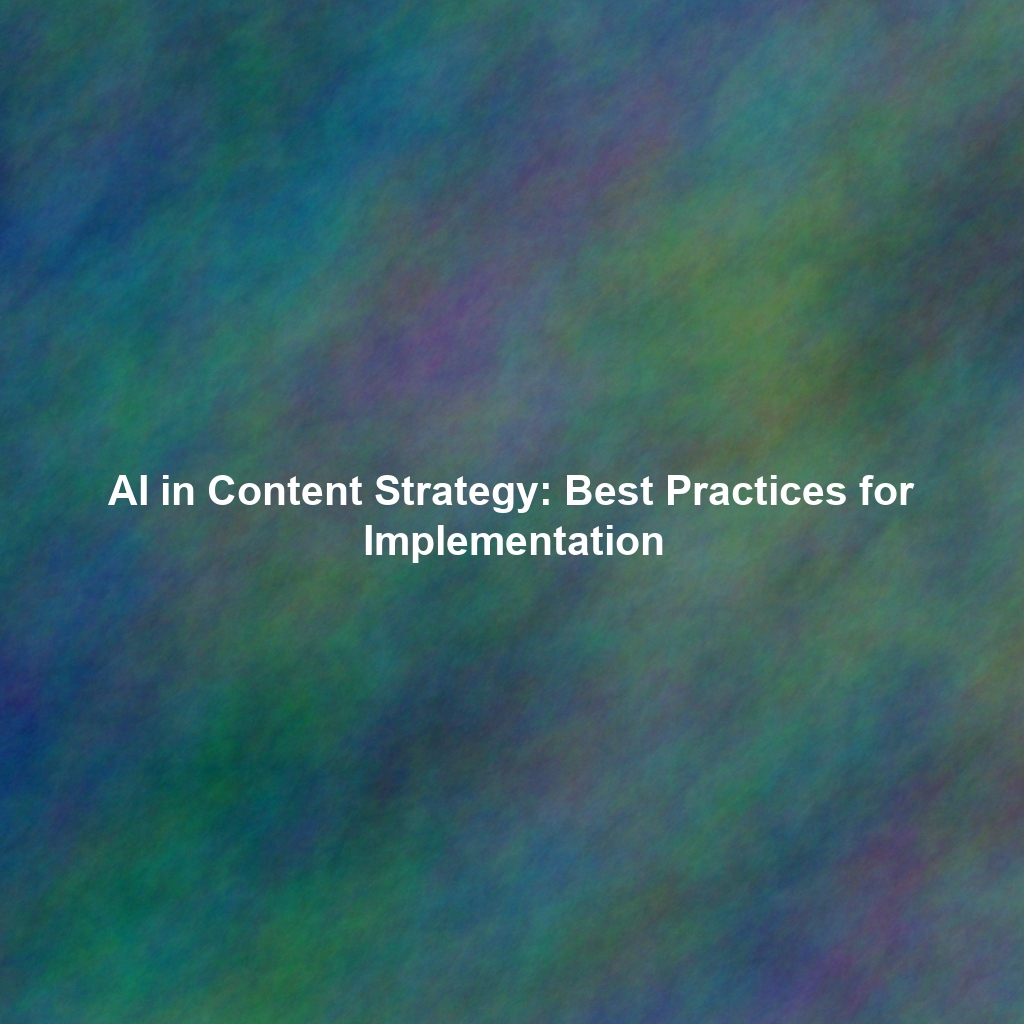Understanding the YouTube Algorithm: The Viewer’s Advocate & The Core Drivers of Visibility
The YouTube algorithm is a complex, constantly evolving beast, making it crucial to stay updated on its core principles. While the exact workings remain a closely guarded secret, the underlying philosophy is clear: YouTube’s primary goal is to keep viewers on the platform for as long as possible, watching content they love. Therefore, the algorithm rigorously prioritizes videos that demonstrate high engagement, relevance, and overall viewer satisfaction. Understanding these core drivers is paramount for any effective SEO strategy:
- Watch Time (Total & Average View Duration): This is arguably the single most important ranking factor. YouTube rewards videos that keep viewers watching for longer periods, both in terms of total minutes watched across your channel and average watch time per video. Longer watch times signal to the algorithm that your content is genuinely engaging, valuable, and holds viewer attention. It’s a direct proxy for content quality and audience satisfaction.
- Audience Retention: Closely related to watch time, audience retention measures how much of your video viewers watch, specifically identifying the points where viewers drop off. A high audience retention rate (e.g., viewers watching 70%+ of your video) indicates a captivating video that delivers on its promise, leading to higher rankings. YouTube Analytics provides detailed graphs showing audience retention, allowing for granular optimization.
- Engagement Signals: Likes, thoughtful comments, shares (especially to external platforms), and new subscriptions all signal positive engagement and viewer satisfaction. The more interaction your video receives, the better its chances of ranking higher and being recommended. These actions tell YouTube that your content is resonating with its audience and fostering a community.
- Relevance & User Intent: YouTube needs to precisely understand what your video is about to show it to the right audience at the right time. This is where meticulous keyword research and strategic optimization of your titles, descriptions, and tags come into play. The more relevant your video is to a user’s search query or viewing history, the more likely it is to be recommended. The algorithm is increasingly sophisticated at understanding subtle user intent.
- Click-Through Rate (CTR) for Impressions: The percentage of viewers who click on your video after seeing its thumbnail and title in search results or suggested videos. A high CTR tells YouTube that your content is appealing and relevant to what users are looking for, leading to more impressions and broader distribution. A compelling thumbnail and title are crucial for driving initial clicks.
- Session Starts & Session Watch Time: These metrics indicate how often your video leads to a new viewing session, or how long a user stays on YouTube *after* watching your video (even if they watch other channels). Videos that contribute to longer overall user sessions are favored.
Expect a continued, greater emphasis on user experience, personalized recommendations, and the overall value your content brings to the platform. The algorithm is becoming smarter at understanding user intent and delivering content that resonates deeply with individual viewers. Therefore, focusing on creating high-quality, genuinely engaging content that keeps viewers on the platform remains paramount.
The Algorithm’s Core Philosophy: Viewer Satisfaction & Retention
At its heart, the YouTube algorithm is designed to maximize viewer satisfaction and retention. It’s constantly learning from how users interact with videos. If your video keeps people watching, engages them, and leads them to watch more content (either yours or others’), the algorithm will favor it. This means focusing on true value for the viewer is your ultimate SEO strategy, directly impacting your content’s **E-E-A-T** signals.
Keyword Research: The Foundation of YouTube SEO & Discoverability
Keyword research is the cornerstone of any successful YouTube SEO strategy. It’s the analytical process of identifying the precise words and phrases your target audience uses when actively searching for content like yours. Think like your viewer: what would they type into the search bar to find your video? This isn’t guesswork; it’s data-driven insight. Without proper keyword research, even the best content can remain undiscovered.
How to Conduct Effective Keyword Research for YouTube: A Multi-Pronged Approach
- Brainstorming & Seed Keywords: Start by listing all potential keywords related to your video’s topic. These are your “seed” keywords—the broad terms that define your content. For example, if your video is about “beginner guitar lessons,” your seed keywords might include: “guitar lessons,” “guitar for beginners,” “learn guitar,” “easy guitar chords,” “how to play guitar,” “acoustic guitar lessons,” etc.
- YouTube Suggest & Search Suggestions: Head directly to YouTube’s search bar and start typing in your seed keywords. YouTube’s autocomplete feature will immediately suggest related searches based on actual user queries, giving you invaluable, real-time insights into what people are *actually* searching for. Also, scroll down the search results page to see the “Related searches” section for even more ideas. Pay attention to longer, more specific phrases that appear.
- Google Keyword Planner (and Google Search): While primarily designed for Google Ads, the Google Keyword Planner can provide valuable insights into search volume and keyword competition that often translate to YouTube. Also, perform Google searches for your topic and look at the “People also ask” section and related searches for video-specific content ideas.
- Dedicated YouTube SEO Tools (TubeBuddy & VidIQ): These are indispensable browser extensions specifically tailored for YouTube SEO. TubeBuddy and VidIQ offer comprehensive keyword research capabilities, including keyword scores (indicating search volume vs. competition), competitor analysis, and related keyword suggestions directly within the YouTube interface.
- Analyze Competitor Videos: Take a critical look at the top-ranking videos for your target keywords. This isn’t about copying; it’s about competitive intelligence. Pay close attention to their titles, descriptions, and tags (if visible via tools). What keywords are they using? What kind of content resonates? This can give you invaluable clues about what’s working well in your niche and identify opportunities to create even better, more comprehensive content.
Once you’ve identified a robust list of relevant keywords, prioritize those with a good balance of search volume and manageable competition. **Long-tail keywords** – longer, more specific phrases (typically three or more words) – can be particularly effective. For example, instead of “guitar lessons,” a long-tail keyword might be “easy guitar lessons for beginners acoustic.” Long-tail keywords often have less competition, making it significantly easier to rank for them, and they often indicate higher user intent, leading to better conversion rates (e.g., subscribing, watching more videos).
On-Page Optimization: Making Your Videos Search-Friendly & Click-Worthy
On-page optimization involves meticulously optimizing your video’s title, description, tags, and thumbnail to improve its visibility in search results and, crucially, its click-through rate. These elements provide YouTube with crucial information about your video’s content and relevance, and they are your primary tools for driving clicks from search results and suggested videos.
1. Crafting Compelling Titles: Your First Impression & Hook
Your video title is the first thing viewers see in search results and suggested feeds, so it needs to be both attention-grabbing and informative. It’s your primary hook. Include your primary keyword naturally within the title, ideally towards the beginning, as this helps YouTube understand the core topic immediately. Keep it concise (under 60 characters) to avoid truncation in search results, ensuring your full message is visible. Aim for clarity, intrigue, and keyword relevance. Consider using numbers, brackets, or strong benefit-driven language.
- Bad Example:
My Video About Guitar Lessons(Too generic, no clear benefit) - Good Example:
Guitar Lessons for Beginners: Easy Chords & Techniques (Start Playing Today!)(Clear topic, benefit-oriented, includes primary and secondary keywords) - Even Better:
Learn Guitar Fast: Easy Chords & Beginner Techniques [2024 Guide](Stronger call to action, addresses pain point, adds specificity)
2. Writing Effective Descriptions: Providing Context & Keywords (Your Mini-Blog Post)
Your video description provides more comprehensive context about your video’s content. This is your opportunity to tell YouTube’s algorithm (and potential viewers) exactly what your video is about, using natural language. Aim for a detailed description (at least 200-500 words) that includes your primary and secondary keywords naturally throughout the text. Think of it as a mini-blog post for your video.
- Summary & Keywords: Write a clear, engaging summary of what the video is about in the first 2-3 lines (this is what appears above the “show more” button). Integrate your primary and secondary keywords here.
- Call to Action: Include a clear call to action (e.g., “Subscribe for more videos!”, “Download our free guide!”, “Visit our website!”).
- Relevant Links: Add links to your website, social media profiles, relevant products, or other videos/playlists.
- Timestamped Chapters: Use timestamps (e.g.,
0:00 Introduction,2:15 Key Concept 1) to break your video into chapters. This improves user navigation, boosts watch time (as users can jump to relevant sections), and helps YouTube understand your video’s structure for better indexing. - Relevant Hashtags: Include relevant hashtags (e.g.,
#GuitarLessons #BeginnerGuitar #LearnToPlay) to help YouTube categorize your video and improve discoverability through hashtag searches. Use 3-5 relevant hashtags. - Transcript: Consider adding a full transcript of your video. This provides even more textual content for YouTube to crawl, improving relevance.
3. Utilizing Tags Strategically: Helping YouTube Categorize Your Video
Tags are keywords that help YouTube understand your video’s topic, category, and context. They assist YouTube in surfacing your video for relevant searches and suggested videos. Use tags strategically, not excessively.
- Mix Broad & Specific: Use a mix of broad terms (e.g., “guitar”) and specific, long-tail tags (e.g., “acoustic guitar lessons for beginners”).
- Include Primary & Secondary Keywords: Ensure your main target keywords are included as tags.
- Use Keyword Research Tools: Leverage TubeBuddy or VidIQ to find relevant and high-performing tags used by competitors.
- Don’t Stuff Tags: Avoid stuffing your tags with irrelevant keywords, as this can confuse YouTube and potentially harm your ranking. Focus on accuracy and relevance.
4. Creating Eye-Catching Thumbnails: Your Digital Billboard for Clicks
Your video thumbnail is the visual representation of your video in search results and suggested feeds. It’s often the single most important factor for driving clicks, even more so than the title. Create custom thumbnails that are visually appealing, relevant to your video’s content, and consistent with your brand. Think of it as a miniature billboard.
- High-Quality Image: Use high-resolution, clear images.
- Clear, Readable Text: If you use text, make it large, bold, and easy to read even on small screens. Use contrasting colors.
- Visually Engaging: Use bright colors, clear facial expressions (if applicable), and compelling imagery that stands out.
- Relevant to Content: The thumbnail must accurately represent the video’s content. Avoid clickbait thumbnails that are misleading or deceptive, as this leads to high bounce rates and harms your watch time.
- Brand Consistency: Incorporate your brand’s colors, logo, or specific visual style to make your videos instantly recognizable.
Off-Page Optimization: Building Authority and Expanding Reach
Off-page optimization involves promoting your videos outside of YouTube to build authority, generate backlinks, and drive external traffic. This signals broader relevance and trust to YouTube’s algorithm.
1. Promoting Your Videos on Social Media: Strategic Distribution
Share your videos across all your relevant social media channels (Facebook, Instagram, X, LinkedIn, TikTok). Tailor your social media posts to each platform’s unique audience and format. Encourage your followers to watch, like, comment, and share your videos. Use short, engaging snippets or GIFs to drive curiosity and clicks back to YouTube.
2. Embedding Your Videos on Websites and Blogs: Building Backlinks & Context
Embed your videos on relevant pages of your official website and blog posts. This not only increases time on site and provides valuable context but also generates backlinks. Backlinks from reputable websites signal authority to YouTube and can significantly boost your video’s ranking in search results, both on YouTube and Google (as Google often features videos in its SERP).
3. Collaborating with Other YouTubers: Tapping into New Audiences
Collaborate with other YouTubers in your niche or related fields. This exposes your content to their audience and vice-versa, significantly expanding your reach and subscriber base. Cross-promote each other’s videos and channels through shout-outs, joint videos, and social media mentions to drive traffic and increase visibility. This is a powerful, organic growth strategy that leverages existing communities.
4. Engaging with Online Communities: Forums & Q&A Sites
Participate in relevant online forums (e.g., Reddit, niche-specific communities) and Q&A sites (e.g., Quora) where your target audience congregates. Provide helpful, valuable answers to questions related to your video content, and where appropriate, link back to your YouTube video as a resource. Focus on providing value first, not just self-promotion.
Leveraging YouTube Playlists & Channel Optimization: Structuring for Success
Beyond individual video optimization, structuring your channel effectively through playlists and overall channel optimization is crucial for long-term growth and viewer retention.
1. YouTube Playlists: Curated Content Experiences
Organizing your videos into logical, thematic playlists can significantly improve your watch time and audience retention. Playlists encourage viewers to watch multiple videos in a row, increasing their overall engagement with your channel. Create playlists based on topic, theme, series, or even skill level (e.g., “Beginner Guitar Lessons,” “Advanced Soloing Techniques”). Playlists can also improve your channel’s visibility in search results, as YouTube often ranks entire playlists for broad topics.
2. Channel Optimization: The Holistic View
Optimize your entire channel for discoverability and user experience:
- Channel Keywords: In YouTube Studio, add relevant keywords to your channel settings to help YouTube understand your channel’s overall topic and niche.
- Channel Trailer: Create a compelling, short channel trailer for non-subscribers that clearly explains what your channel is about, its value proposition, and why they should subscribe.
- Featured Channels: Feature other relevant channels on your homepage.
- About Section: Write a detailed, keyword-rich “About” section that clearly describes your channel’s mission, content, and value to viewers. Include relevant links.
- Custom URL & Branding: Use a custom URL for your channel and ensure consistent branding (channel art, profile picture) across all your online presences.
Analyzing YouTube Analytics: Tracking Your Progress & Making Data-Driven Adjustments
YouTube Analytics (YouTube Studio > Analytics) is your most powerful tool for understanding your video’s performance. Use this data to track your progress, identify areas for improvement, and make data-driven adjustments to your content and SEO strategy. This iterative process of analysis and optimization is crucial for sustained growth.
Key Metrics to Track in YouTube Analytics: Your Performance Dashboard
- Watch Time (Total & Average View Duration): The total amount of time viewers spend watching your video and the average duration. This is your North Star metric.
- Audience Retention: The percentage of viewers who watch your video from start to finish. Look for sharp drop-offs to identify areas where content might be losing engagement.
- Click-Through Rate (CTR) for Impressions: The percentage of viewers who click on your video after seeing its thumbnail and title in search results or suggested videos. A low CTR indicates a problem with your title or thumbnail.
- Traffic Sources: Where viewers are coming from (e.g., YouTube search, suggested videos, external websites, browse features). This tells you how discoverable your content is.
- Engagement Metrics: Likes, dislikes, comments, shares, and subscriptions. These indicate how much your content resonates.
- Unique Viewers: The number of individual people who watched your video, helping you understand your reach.
- Demographics: Understanding your audience’s age, gender, and geographic location helps refine content and targeting.
Experiment with different titles, descriptions, and thumbnails based on your CTR data. Analyze audience retention graphs to pinpoint where viewers are dropping off, informing future content improvements. Continuously analyze your results and adjust your strategy accordingly. This analytical rigor is what separates thriving channels from stagnant ones.
If your “YouTube search” traffic is low, focus on keyword optimization. If “Suggested videos” traffic is low, work on improving watch time and engagement. If “Browse features” is low, your thumbnails and titles might need work to entice clicks from the homepage or subscriptions feed.
Staying Ahead of Algorithm Changes & Future Trends
The YouTube algorithm is constantly evolving, so it’s crucial to stay updated on the latest changes and best practices. This requires continuous learning and adaptation:
- Follow Industry Blogs & Experts: Stay informed by reading official YouTube creator blogs, industry publications, and insights from leading YouTube SEO experts.
- Attend Webinars & Conferences: Participate in online and offline events to learn about emerging trends and strategies.
- Experiment & Test: Don’t be afraid to experiment with different strategies for your channel. Run controlled tests to see what works best for your specific audience and content.
- Focus on User Intent & Value: As AI advances, YouTube’s ability to understand user intent will only improve. Focus on truly understanding what your audience wants and delivering maximum value.
- Embrace New Formats: Be open to new video formats (e.g., YouTube Shorts, Live Streams) and integrate them into your strategy where relevant.
Continuously adapt your SEO strategy to remain competitive and maximize your video’s visibility. Agility is key in the dynamic world of online video.
Conclusion: Mastering YouTube SEO for Long-Term, Sustainable Success
Mastering YouTube SEO is an ongoing process, not a one-time task. It requires consistent effort, analytical rigor, and a deep understanding of both the platform’s algorithms and your audience’s needs. By implementing the strategies outlined in this guide—focusing on creating high-quality, genuinely engaging content, conducting thorough keyword research, meticulously optimizing your videos for search, strategically promoting your videos on other platforms, and leveraging the power of YouTube Analytics—you can significantly improve your video’s ranking and visibility.
Remember that YouTube SEO is a long-term strategy that requires patience and persistence. Stay consistent with your content creation, adapt to the ever-changing YouTube landscape, and continuously refine your approach based on data. By doing so, you can unlock the full potential of YouTube marketing, build a thriving channel, establish your brand’s authority, and achieve your business goals in the competitive digital video arena.
 Skip to content
Skip to content
